Most of my NWSG is expired CRP,After years of chasing coyotes and jumping deer while driving pastures we always jumped deer or other wildlife around structure or low areas that grow what we called the red grass. I started dragging tree tops out into the grass and this creates areas of woody growth.
-
If you are posting pictures, and they aren't posting in the correct orientation, please flush your browser cache and try again.
Edge
Safari/iOS
Chrome
You are using an out of date browser. It may not display this or other websites correctly.
You should upgrade or use an alternative browser.
You should upgrade or use an alternative browser.
Take a walk with me through the prairie
- Thread starter Native Hunter
- Start date
Native Hunter
5 year old buck +
As I was doing habitat work recently, I came upon this little shrub. As you can see, it is browsed almost to the ground. There is a reason for that. This is "Strawberry Bush," which is an "ice cream" browse plant for whitetail deer. The only places I find these in better shape are where they are protected by briers or something else that obstructs the deer. This year I found some nice ones and transplanted them with a cage. The deer keep them trimmed back right to the edge of the wire.
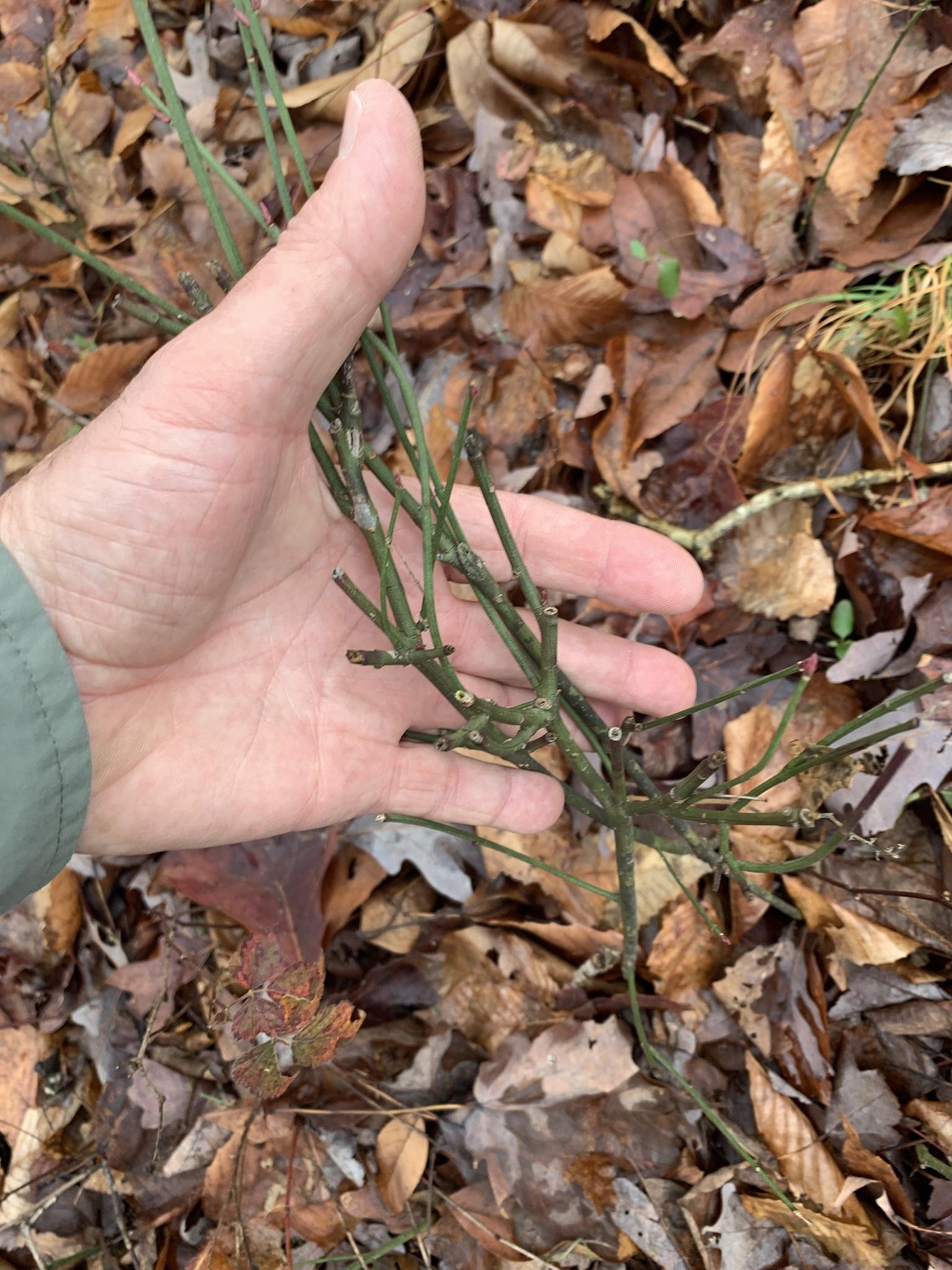

omicron1792
5 year old buck +
How often do you burn Native?As I was doing habitat work recently, I came upon this little shrub. As you can see, it is browsed almost to the ground. There is a reason for that. This is "Strawberry Bush," which is an "ice cream" browse plant for whitetail deer. The only places I find these in better shape are where they are protected by briers or something else that obstructs the deer. This year I found some nice ones and transplanted them with a cage. The deer keep them trimmed back right to the edge of the wire.

Native Hunter
5 year old buck +
How often do you burn Native?
I have never burned. I do believe there would be some benefits to it, but I'm meeting my goals without doing it.
Troubles Trees
5 year old buck +
I am not familiar with Strawberry bush but rest assured I will look that one up Native!
Always enjoy reading your content!
Always enjoy reading your content!
Native Hunter
5 year old buck +
I am not familiar with Strawberry bush but rest assured I will look that one up Native!
Always enjoy reading your content!
This is a good link on strawberry bush:
Native Hunter
5 year old buck +
My plant today is one that is not a native, and it is considered by some to be invasive. It certainly is invasive, but it will never be invasive where deer exist. This is because they love to eat it so much, they will destroy it. The plant I'm speaking of is Winterberry Euonymus (aka Euonymus fortunei). The only place I have ever seen this plant thrive is in spots close to houses or roads - and possibly in some spots that are blocked off from deer. As you can see below, the only place on my entire farm that it exists is facing the highway - but even there, deer have stood out on the blacktop at times and browsed it.
This plant is very unusual. It starts as a groundcover, but it can also take the form of a shrub or climbing vine. When it climbs a tree is when it starts making orange berries. I'm sure the birds eat the berries and spread this plant, but before it can establish in a new place, deer will eat it to the ground and destroy it.
I'm going to do a little experimenting with this plant. I'm going to start it in some cages at a few places and let it get established. Then at some point I will remove the cages and see if it can survive the browsing. Or, it might be better to leave the cages and let it climb the cages. That way the deer can eat from the outside and not be able to completely kill it.
I would like some feedback from you guys on where you have observed this plant. My guess is that you will tell me in yards and cities but not out in the wild. Let me know................. PS - this has to be in the top 5 plants of preferred deer browse that I have ever seen.

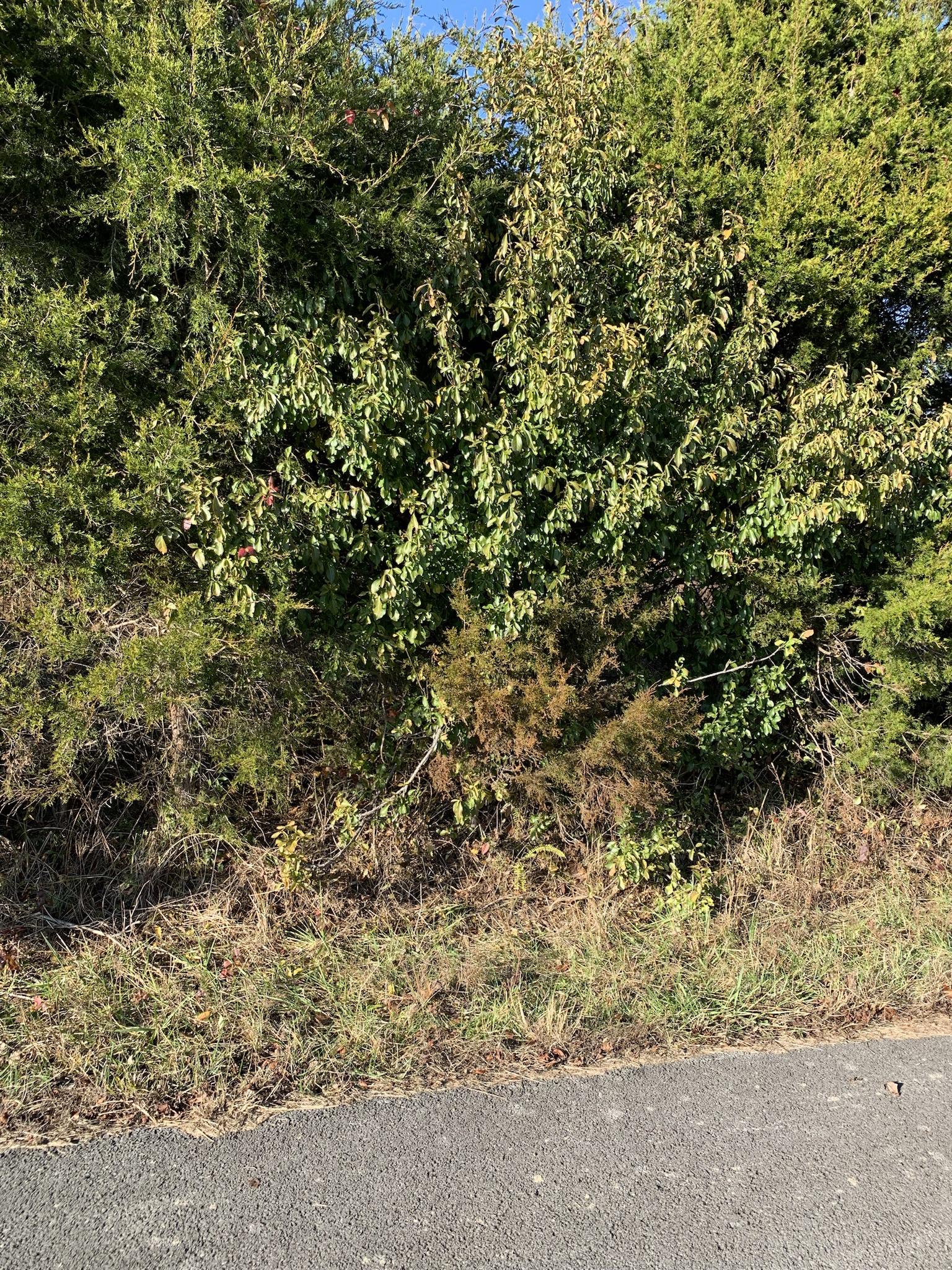
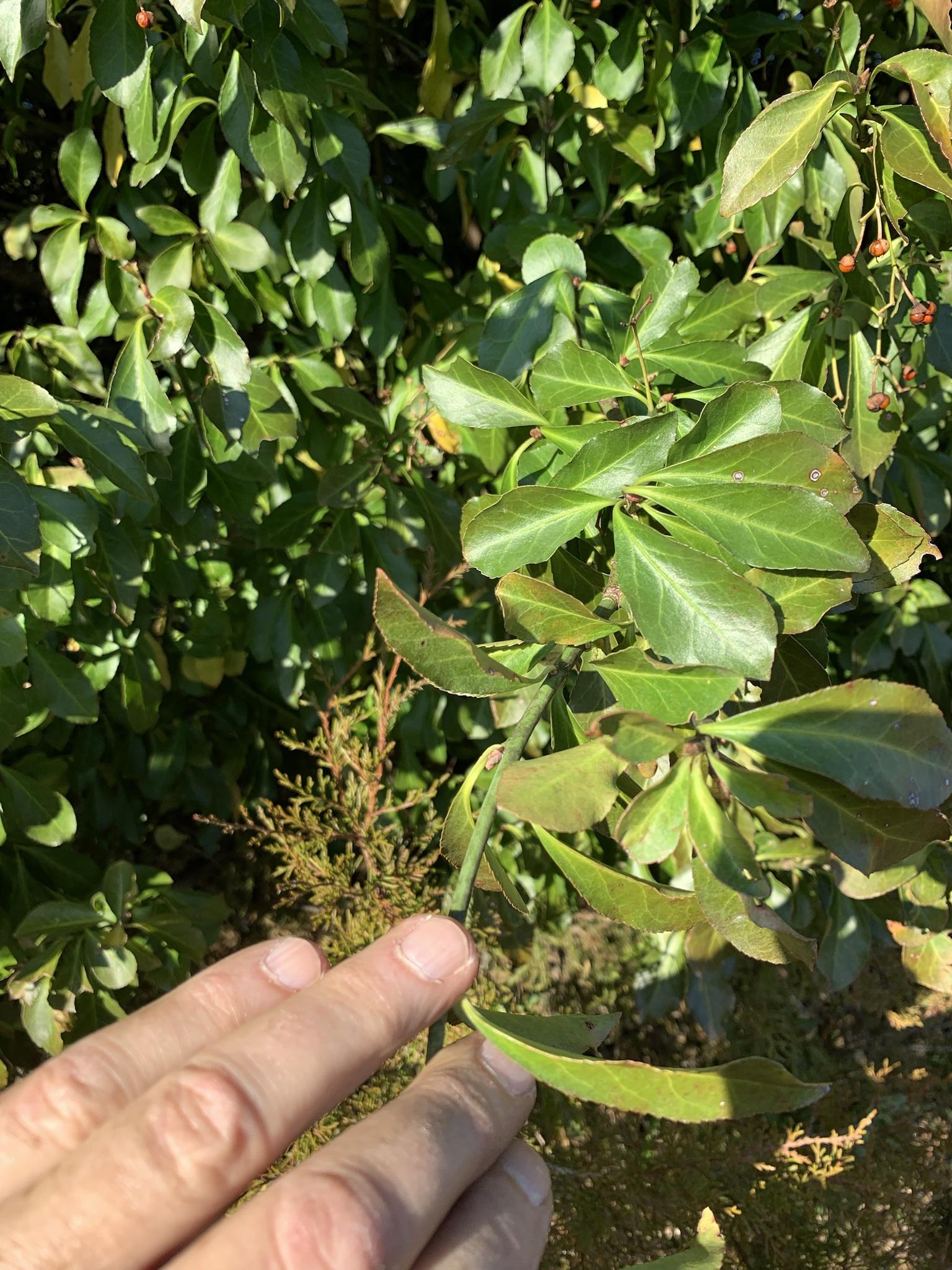
This plant is very unusual. It starts as a groundcover, but it can also take the form of a shrub or climbing vine. When it climbs a tree is when it starts making orange berries. I'm sure the birds eat the berries and spread this plant, but before it can establish in a new place, deer will eat it to the ground and destroy it.
I'm going to do a little experimenting with this plant. I'm going to start it in some cages at a few places and let it get established. Then at some point I will remove the cages and see if it can survive the browsing. Or, it might be better to leave the cages and let it climb the cages. That way the deer can eat from the outside and not be able to completely kill it.
I would like some feedback from you guys on where you have observed this plant. My guess is that you will tell me in yards and cities but not out in the wild. Let me know................. PS - this has to be in the top 5 plants of preferred deer browse that I have ever seen.



Last edited:
Native Hunter
5 year old buck +
Lowbush Blueberry. These are native in our parts but very picky about where they grow. And Yes, I do eat berries off of them. They are delicious.

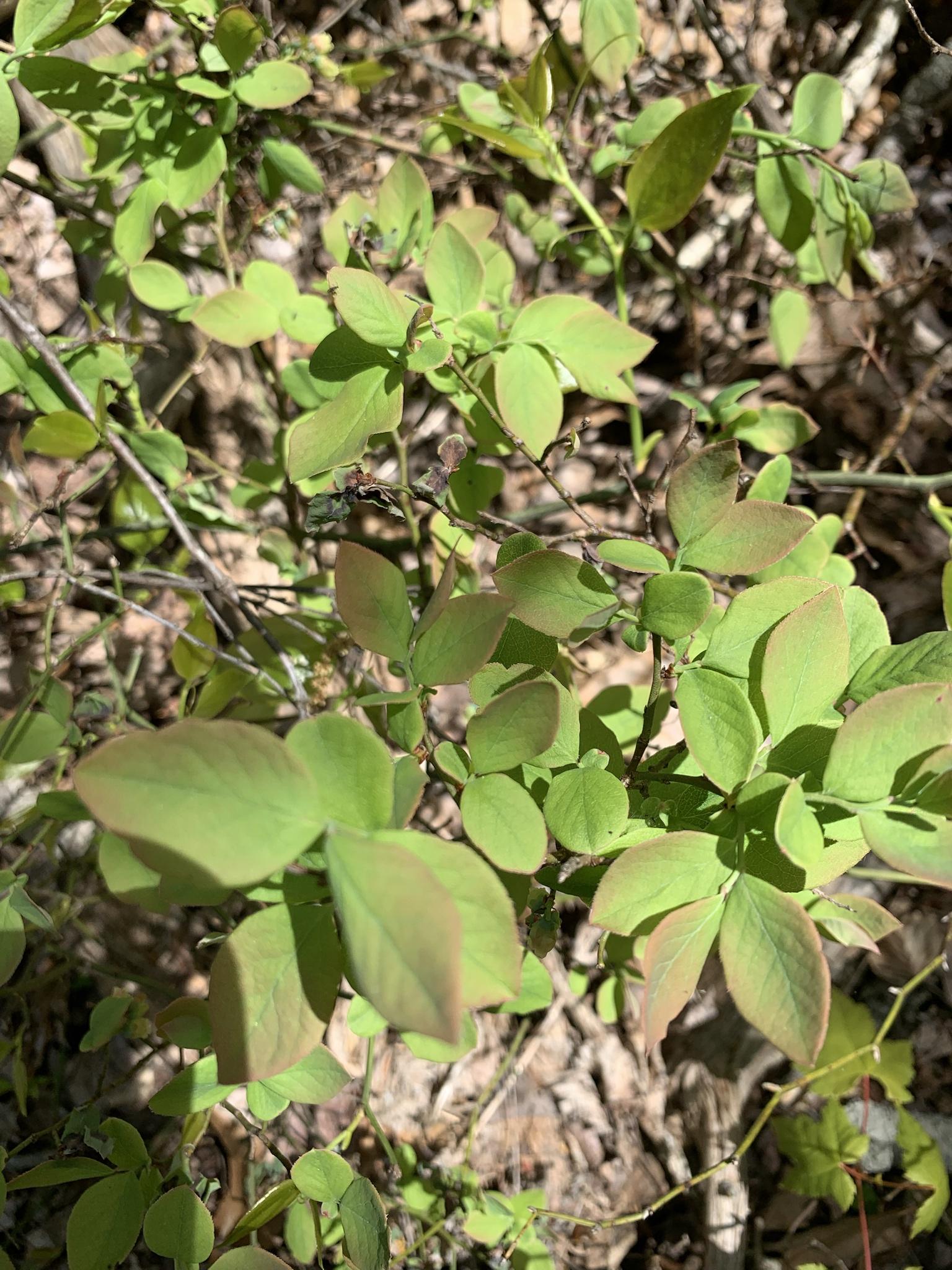


Brushpile (Brad) gave me some several years ago.As I was doing habitat work recently, I came upon this little shrub. As you can see, it is browsed almost to the ground. There is a reason for that. This is "Strawberry Bush," which is an "ice cream" browse plant for whitetail deer. The only places I find these in better shape are where they are protected by briers or something else that obstructs the deer. This year I found some nice ones and transplanted them with a cage. The deer keep them trimmed back right to the edge of the wire.
I was surprised to see that a few are still kicking, granted they have some caged protection. It's not native up in my area.
Strawberry Bush and Eastern Wahoo both get mowed down.
Native Hunter
5 year old buck +
Yes, they are browsed extremely hard. I'm using cages and getting a few more started on my place.Brushpile (Brad) gave me some several years ago.
I was surprised to see that a few are still kicking, granted they have some caged protection. It's not native up in my area.
Strawberry Bush and Eastern Wahoo both get mowed down.
b116757
5 year old buck +
Last time I went picking wild blueberries my uncle and I dropped off my aunt and some cousins in one place and said we where headed over to a different location. Well we stopped by a bar for a while then the grocery store picked up a quart of blueberries dumped them in our bucket and headed back to pick them up. Man I love picking blueberries.
nwmn
5 year old buck +
I love this thread, even more so now that I am planning to convert years of fescue and brome back into a native landscape. I'm in nw mn with harsh winters, and specifically this year there was a lot of winterkill due to food availability.
Are there any species that give sustenance to deer during winter months, or is all nutritional value of forbs essentially gone once they reach senesis? Are all asters generally good deer browse?
Are there any species that give sustenance to deer during winter months, or is all nutritional value of forbs essentially gone once they reach senesis? Are all asters generally good deer browse?
Native Hunter
5 year old buck +
I love this thread, even more so now that I am planning to convert years of fescue and brome back into a native landscape. I'm in nw mn with harsh winters, and specifically this year there was a lot of winterkill due to food availability.
Are there any species that give sustenance to deer during winter months, or is all nutritional value of forbs essentially gone once they reach senesis? Are all asters generally good deer browse?
There has been a lot of research done over the years on seasonal food preferences of whitetail deer. I think most research agrees that in the winter months, woody browse makes up the majority of their diets. However, I have personally witnessed deer grazing in the prairie when I have been deer hunting in November. I think this is mostly on wild, tender, cool season grasses that are able to survive and rosettes of some forbs that will be green at that time. There is also quite a bit of evidence that deer will browse the browned out basal leaves of goldenrods in the winter, and I suspect this is true for other forbs as well.
My guess is that in your location they might even eat dead grasses (the equivalent of hay) in harsh winters when little else was available. The nutritional value of these would certainly be very good.
And, Yes, asters are generally good deer browse.
Native Hunter
5 year old buck +
Multiflora Rose is a plant that deer will browse quite a bit. They are considered invasive species, but I don't get excited about them, because they are easy to kill with either mowing or herbicide. They also can't take a lot of shade, so you won't find them in a closed canopy forest. I have a few of these scattered around the edges of the prairie, and that is okay. I did cut one back the other day that was trying to climb a pear tree, but otherwise don't give them much thought.
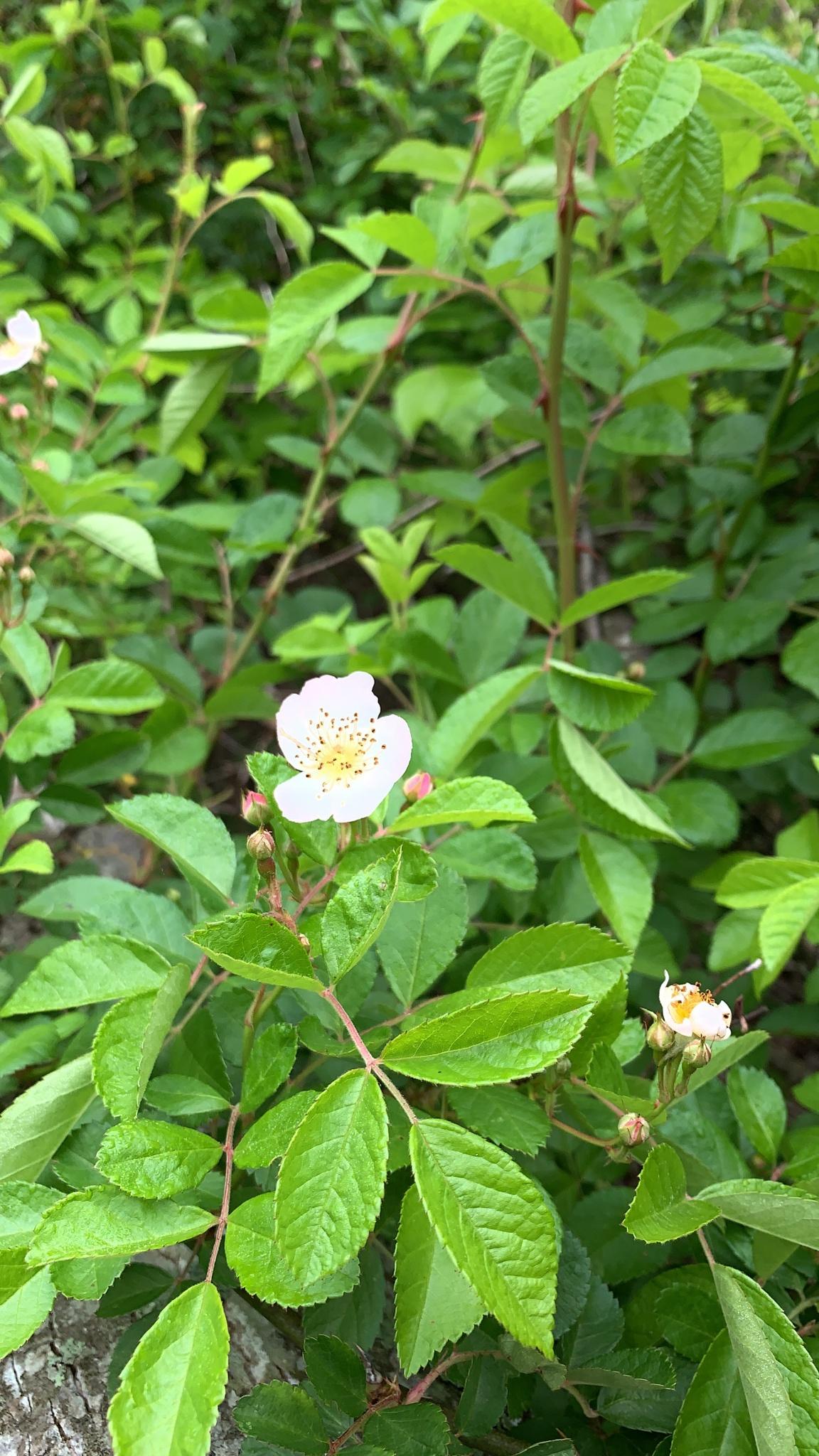

Bill
Administrator
Multiflora Rose is a plant that deer will browse quite a bit. They are considered invasive species, but I don't get excited about them, because they are easy to kill with either mowing or herbicide. They also can't take a lot of shade, so you won't find them in a closed canopy forest. I have a few of these scattered around the edges of the prairie, and that is okay. I did cut one back the other day that was trying to climb a pear tree, but otherwise don't give them much thought.

I gave one some thought today. Helping a neighbor clear a food plot and I didn’t see it until I was pulling the chainsaw away from a small tree I just cut and the MFR bit me…
But I don’t get to worked up about it either.
Troubles Trees
5 year old buck +
Here in NY MFR grows tall for a bush, 8ish feet wide and forms thickets that deer love, but walking through that stuff is ridiculous. The thorns are slightly hooked like a Turkey spur and when you are entangled, they dig in further when you try to pull away. I have shredded many hunting clothes on that stuff! Deer do browse it though and it produces hips, instead of berries, that birds feed on all winter.
Always great to see your posts here Native!
Always great to see your posts here Native!
356
5 year old buck +
NWMN, I agree this is a great thread, and one I enjoy reading as well. BTW, I used to live in Hallock and recall counting herds of deer numbering in the hundreds, along with frequent moose sightings. I hear things have changed a lot since we left in the early 90s.I love this thread, even more so now that I am planning to convert years of fescue and brome back into a native landscape. I'm in nw mn with harsh winters, and specifically this year there was a lot of winterkill due to food availability.
Are there any species that give sustenance to deer during winter months, or is all nutritional value of forbs essentially gone once they reach senesis? Are all asters generally good deer browse?
I have some nwsg that came in naturally after killing the fescue. There were quite a few forbs to begin with, but now the grass - mostly little bluestem - has pretty well choked out the forbs. I also just enrolled a four acre field into a pollinator planing through our G&F Department - and they insist burning is necessary and required.I have never burned. I do believe there would be some benefits to it, but I'm meeting my goals without doing it.
I have burned thousands of acres in my natural resource work with the Feds - but I had help and equipment - even then - a fire or two got out. I dont burn anymore with limited equipment and no help. I have burned enough in the past to learn that.
How do you keep the grass from overwhelming everything else - do you intermittently mow or spray it?
Similar threads
- Replies
- 30
- Views
- 658
